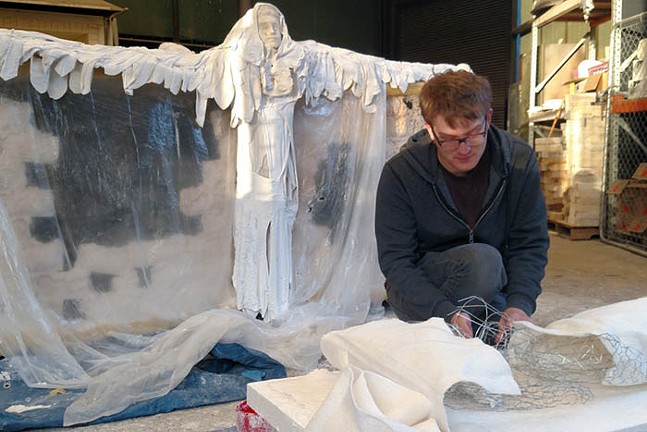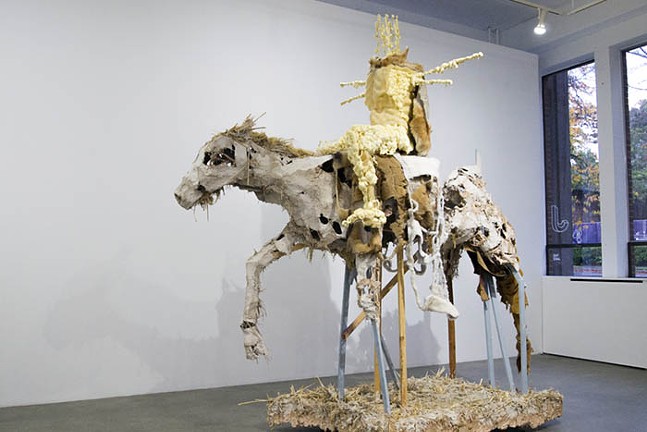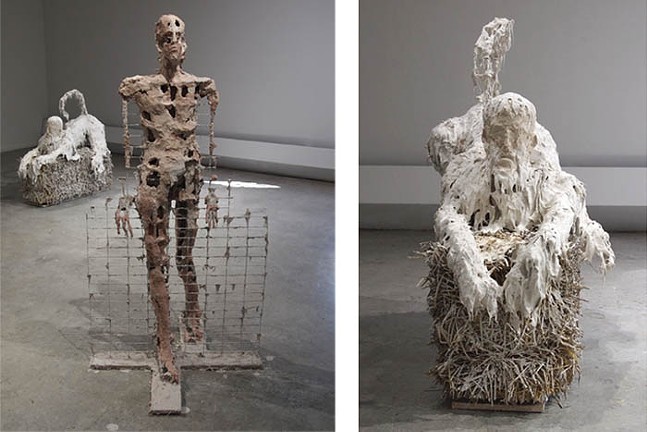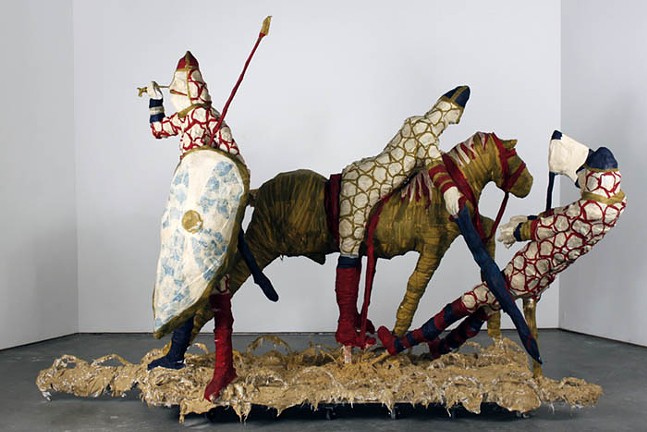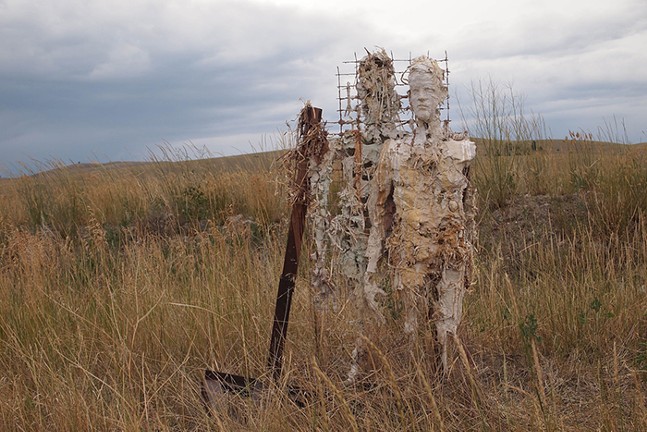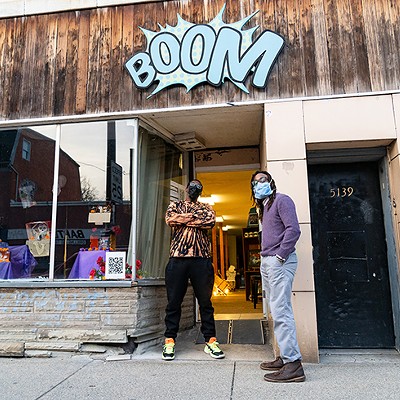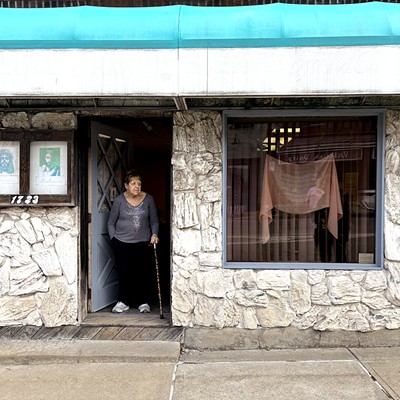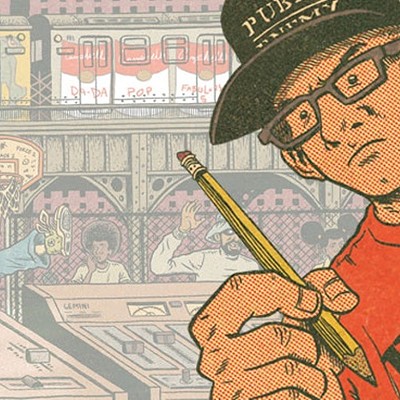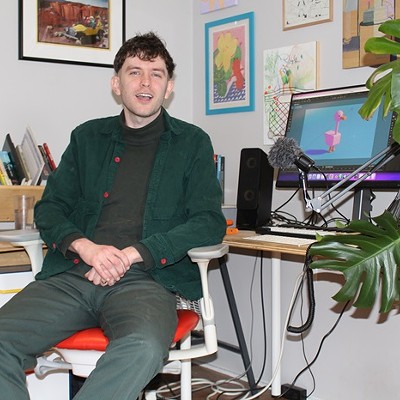In Peter Barbor’s studio, you’ll find buckets of clay and paper pulp, steel cages, and various fibers spread over the floor. All these elements work to build up the figures he creates, all of which portray decaying forms like a preserved body pulled out of a bog.
Born in Western Pennsylvania, Barbor was recently a resident at The Clay Studio in Philadelphia, but now resides in Pittsburgh.
Pittsburgh City Paper spoke with Barbor about history, “artistic genius,” and his process.
You have a very unique and distinctive use of mediums to create partial human forms out of clay, metal, and natural fibers. What led you to create using these materials?
All of my work stems from my study of ceramics and drawing. Before I declared ceramics as my major in art school, I was mostly interested in figure drawing from observation. When I draw, I enjoy layering mark-making techniques and material on a page to create a sense of history and depth. This translated well into clay, which in turn influenced how I navigate other mediums. I don’t deal well with materials that aren’t receptive to touch. I don’t find them intuitive to work with at all.
Plasticity is a quality that is important in ceramics, and almost everything I work with has a plastic stage. Wax, plaster, and clay can all be modeled. Wire mesh holds shapes and defines volume. In graduate school, I became less interested in just using clay and more interested in what happens when many materials work together. How can a piece signify something through its composition that is different from if it were materially uniform? I think a sculpture made of clay and something else is more similar to our bodies. Figuring out that material hierarchy within a piece never bores me.
What inspires you when you first start a piece?
When I was younger, I often worked from a personal reservoir of ideas. More and more, I want to approach making work that is not inherently connected to something biographical or connected to my identity. There are so many images and ideas that are greater than any individual artist. I like to ask myself, what do I contribute to, or how do I serve that idea? How can my voice add to the many other voices that have also engaged with this topic?
I guess as I have aged, I have become disenchanted with the idea of “artistic genius.” I may continually return to ideas that concern the male image, mythology, and — loosely — history, but I want the idea of what I am working through to carry almost as much autonomy as my artistic decisions.
Your work tends to reference historical, often medieval, tombs and artifacts. What made you first interested in creating forms from these histories? Have you always been interested in history?
As someone who works predominantly through a figurative lens, I think it’s important that I consider what my project for the figure is. I am not a historian, but I scavenge through historical iconography. I am partly fascinated with how its legibility has shifted in the present. At what point do historical monuments, iconographies, and narratives become so distant that they no longer hold meaning? When my work literally appears to be decomposing or literally is riddled with holes, it points to the potential vulnerability or illegibility of the historical prototype that I am referencing.
When we casually refer to something as “medieval” today, it’s usually in a pejorative sense. Medieval materiality, however, was very sensitive and rich, especially compared to the gray, prefabricated aesthetics we produce today. I like to explore similar materials today because there is this immense gulf between what I am looking at and referencing and what is possible with my contemporary understanding of the same things.
Your work “Bayeux Bois” is directly inspired by the figures of the “Bayeux Tapestry” and brings them into 3D life. Are your other works directly inspired by specific objects of the past, or typically by the time period in general?
That piece was the first work that I made in grad school, and so a lot of it was about trying to understand something historical through the tools of an artist. To memory, I have never made a work so directly related to a historical artifact since. I was drawn to making that piece because it helped me reconcile how arbitrary at times figurative representation can be. I was struggling with how to visually represent the figure. How “realistic” should I make something? At that time, adopting the style of the figures in the “Bayeux Tapestry” helped me depart from a way of sculpting the human body that was not grounded in much of anything. “Bayeux Bois” started me down a more dedicated path of thinking through certain histories.
Are there any projects you are excited about in the future? Or can you share a dream project or collaboration?
Right now I am working on a group show with a few other artists that should be on view in the fall. It’s the first thing since the peak of COVID that feels “'normal'” for me, which is nice. I keep considering where my work would best be viewed. I am curious about ephemeral outdoor installation. While the content of my work is increasingly less and less overtly personal, the act of making has become a more and more private experience. It’s difficult to balance teaching, making, and life’s other demands, especially when my studio practice is rarely lucrative in a conventional sense. Collaboration, for now, feels like something that is off the table. I would love to be invited to test a piece in an unconventional space outdoors, however.
Peter Barbor. peterbarbor.com

